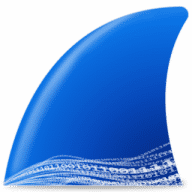Wireshark is one of the world's foremost network protocol analyzers, and is the standard in many parts of the industry. It is the continuation of a project that started in 1998. Hundreds of developers around the world have contributed to it, and it it still under active development.
Wireshark has a rich feature set which includes the following:
- Standard three-pane packet browser
- Multi-platform: Runs on Windows, Linux, OS X, Solaris, FreeBSD, NetBSD, and many others
- Multi-interface: Along with a standard GUI, Wireshark includes TShark, a text-mode analyzer which is useful for remote capture, analysis, and scripting
- The most powerful display filters in the industry
- VoIP analysis
- Live capture and offline analysis are supported
- Read/write many different capture file formats: tcpdump (libpcap), NAI's Sniffer (compressed and uncompressed), Sniffer Pro, NetXray, Sun snoop and atmsnoop, Shomiti/Finisar Surveyor, AIX's iptrace, Microsoft's Network Monitor, Novell's LANalyzer, RADCOM's WAN/LAN Analyzer, HP-UX nettl, i4btrace from the ISDN4BSD project, Cisco Secure IDS iplog, the pppd log (pppdump-format), the AG Group's/WildPacket's EtherPeek/TokenPeek/AiroPeek, Visual Networks' Visual UpTime and many others
- Capture files compressed with gzip can be decompressed on the fly
- Hundreds of protocols are supported, with more being added all the time
- Coloring rules can be applied to the packet list, which eases analysis

